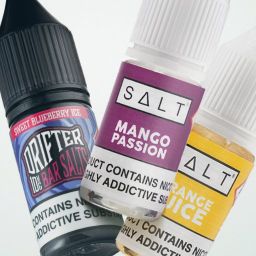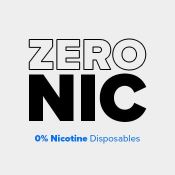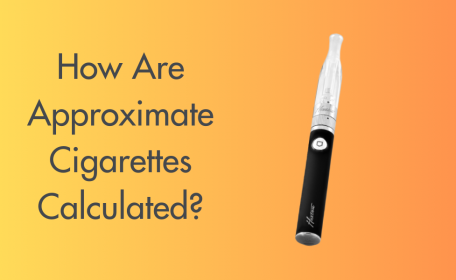← Back

 In 2009, the party drug mephedrone — more commonly known as m-cat or meow meow — became widely available across cities in the UK. Mephedrone was originally developed in Israel as a pesticide, but enterprising individuals soon realised that it could be used as a weak, cocaine-like stimulant. By a quirk of law, mephedrone was completely legal, and for a couple of years you could have mephedrone delivered to your house just as you could a pizza or a curry.
While mephedrone was legal, cocaine users switched over to this new, cheap and easy to access drug in huge numbers. Mephedrone creates a similar high to cocaine, but it was a much safer drug for two important reasons. 1) It’s a much weaker stimulant, meaning that it is more difficult for users to overdose. 2) It was legal, meaning that the people selling it had no incentive to ‘cut’ the drug with other more dangerous substances, as happens with cocaine.
The result of the mephedrone craze was the drop in cocaine-related deaths… until 2010. Two young men went drinking for seven hours on a Sunday night, took mephedrone and died later that evening. No one knows for sure if it was the mephedrone that killed them, but it is suspected that mephedrone combined with the massive amounts of alcohol in their bloodstream in a dangerous and tragic way.
The local police station in Scunthorpe called an international press conference (probably a first for Scunthorpe) — pulling in journalists from as far afield as CNN to write up a story on the ‘scary new drug’. In 2010, mephedrone was banned and by 2012, when existing stockpiles had been exhausted, cocaine-related deaths had soared back to pre-mephedrone levels. The latest data shows that there were 247 deaths involving cocaine in 2014, the highest figure ever recorded.
In 2009, the party drug mephedrone — more commonly known as m-cat or meow meow — became widely available across cities in the UK. Mephedrone was originally developed in Israel as a pesticide, but enterprising individuals soon realised that it could be used as a weak, cocaine-like stimulant. By a quirk of law, mephedrone was completely legal, and for a couple of years you could have mephedrone delivered to your house just as you could a pizza or a curry.
While mephedrone was legal, cocaine users switched over to this new, cheap and easy to access drug in huge numbers. Mephedrone creates a similar high to cocaine, but it was a much safer drug for two important reasons. 1) It’s a much weaker stimulant, meaning that it is more difficult for users to overdose. 2) It was legal, meaning that the people selling it had no incentive to ‘cut’ the drug with other more dangerous substances, as happens with cocaine.
The result of the mephedrone craze was the drop in cocaine-related deaths… until 2010. Two young men went drinking for seven hours on a Sunday night, took mephedrone and died later that evening. No one knows for sure if it was the mephedrone that killed them, but it is suspected that mephedrone combined with the massive amounts of alcohol in their bloodstream in a dangerous and tragic way.
The local police station in Scunthorpe called an international press conference (probably a first for Scunthorpe) — pulling in journalists from as far afield as CNN to write up a story on the ‘scary new drug’. In 2010, mephedrone was banned and by 2012, when existing stockpiles had been exhausted, cocaine-related deaths had soared back to pre-mephedrone levels. The latest data shows that there were 247 deaths involving cocaine in 2014, the highest figure ever recorded.
What Can Vapers Learn From Mephedrone?

A look at the banned party drug mephedrone might reveal what will happen if vaping becomes much more tightly regulated or taxed.
From 2009 to 2011, the number of cocaine-related deaths in the UK fell for the first and only time on record. But it wasn’t government regulation or prohibition that managed to achieve what nothing else had. It was an innovative new product. In 2009, the party drug mephedrone — more commonly known as m-cat or meow meow — became widely available across cities in the UK. Mephedrone was originally developed in Israel as a pesticide, but enterprising individuals soon realised that it could be used as a weak, cocaine-like stimulant. By a quirk of law, mephedrone was completely legal, and for a couple of years you could have mephedrone delivered to your house just as you could a pizza or a curry.
While mephedrone was legal, cocaine users switched over to this new, cheap and easy to access drug in huge numbers. Mephedrone creates a similar high to cocaine, but it was a much safer drug for two important reasons. 1) It’s a much weaker stimulant, meaning that it is more difficult for users to overdose. 2) It was legal, meaning that the people selling it had no incentive to ‘cut’ the drug with other more dangerous substances, as happens with cocaine.
The result of the mephedrone craze was the drop in cocaine-related deaths… until 2010. Two young men went drinking for seven hours on a Sunday night, took mephedrone and died later that evening. No one knows for sure if it was the mephedrone that killed them, but it is suspected that mephedrone combined with the massive amounts of alcohol in their bloodstream in a dangerous and tragic way.
The local police station in Scunthorpe called an international press conference (probably a first for Scunthorpe) — pulling in journalists from as far afield as CNN to write up a story on the ‘scary new drug’. In 2010, mephedrone was banned and by 2012, when existing stockpiles had been exhausted, cocaine-related deaths had soared back to pre-mephedrone levels. The latest data shows that there were 247 deaths involving cocaine in 2014, the highest figure ever recorded.
In 2009, the party drug mephedrone — more commonly known as m-cat or meow meow — became widely available across cities in the UK. Mephedrone was originally developed in Israel as a pesticide, but enterprising individuals soon realised that it could be used as a weak, cocaine-like stimulant. By a quirk of law, mephedrone was completely legal, and for a couple of years you could have mephedrone delivered to your house just as you could a pizza or a curry.
While mephedrone was legal, cocaine users switched over to this new, cheap and easy to access drug in huge numbers. Mephedrone creates a similar high to cocaine, but it was a much safer drug for two important reasons. 1) It’s a much weaker stimulant, meaning that it is more difficult for users to overdose. 2) It was legal, meaning that the people selling it had no incentive to ‘cut’ the drug with other more dangerous substances, as happens with cocaine.
The result of the mephedrone craze was the drop in cocaine-related deaths… until 2010. Two young men went drinking for seven hours on a Sunday night, took mephedrone and died later that evening. No one knows for sure if it was the mephedrone that killed them, but it is suspected that mephedrone combined with the massive amounts of alcohol in their bloodstream in a dangerous and tragic way.
The local police station in Scunthorpe called an international press conference (probably a first for Scunthorpe) — pulling in journalists from as far afield as CNN to write up a story on the ‘scary new drug’. In 2010, mephedrone was banned and by 2012, when existing stockpiles had been exhausted, cocaine-related deaths had soared back to pre-mephedrone levels. The latest data shows that there were 247 deaths involving cocaine in 2014, the highest figure ever recorded.
























